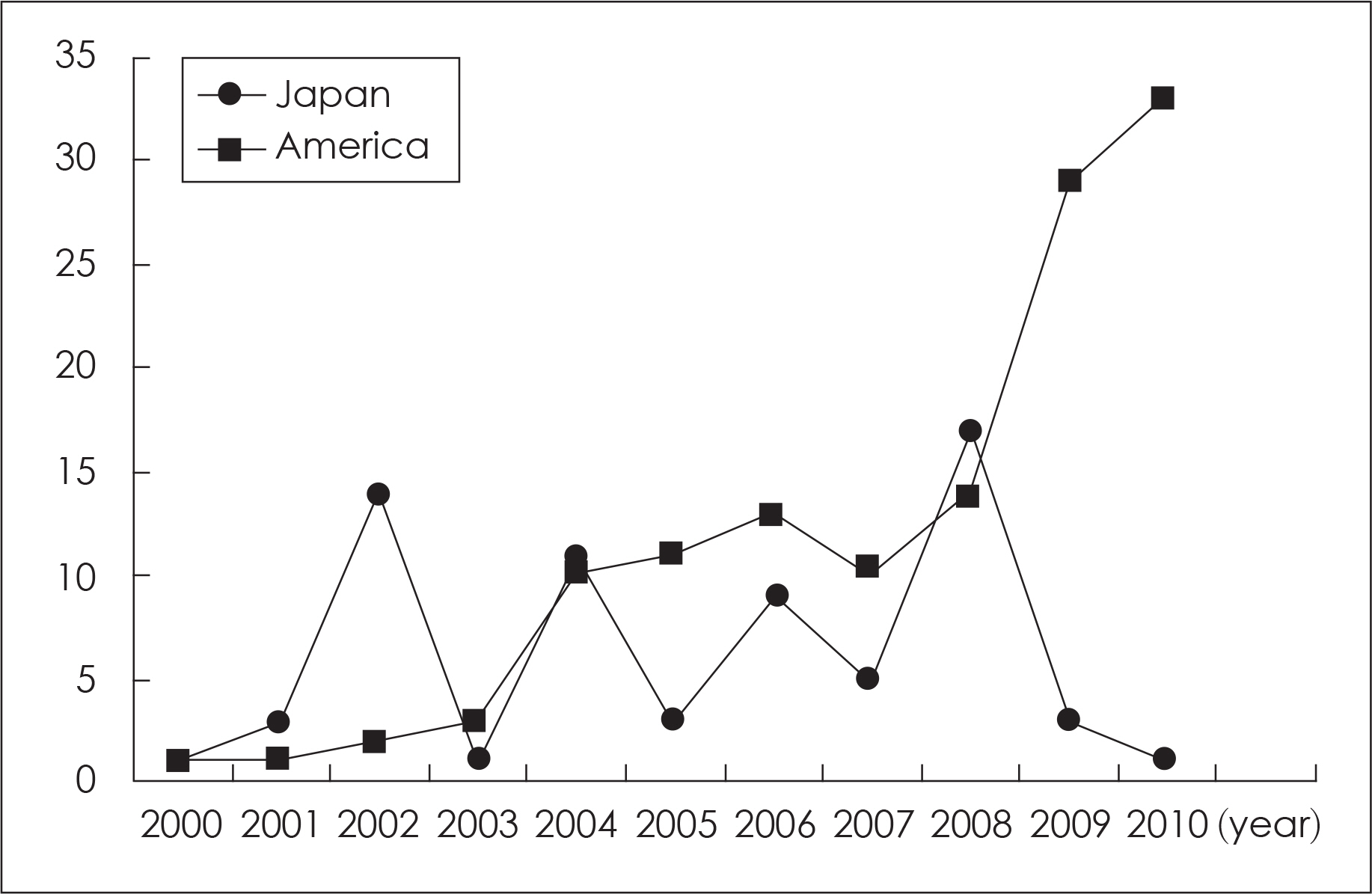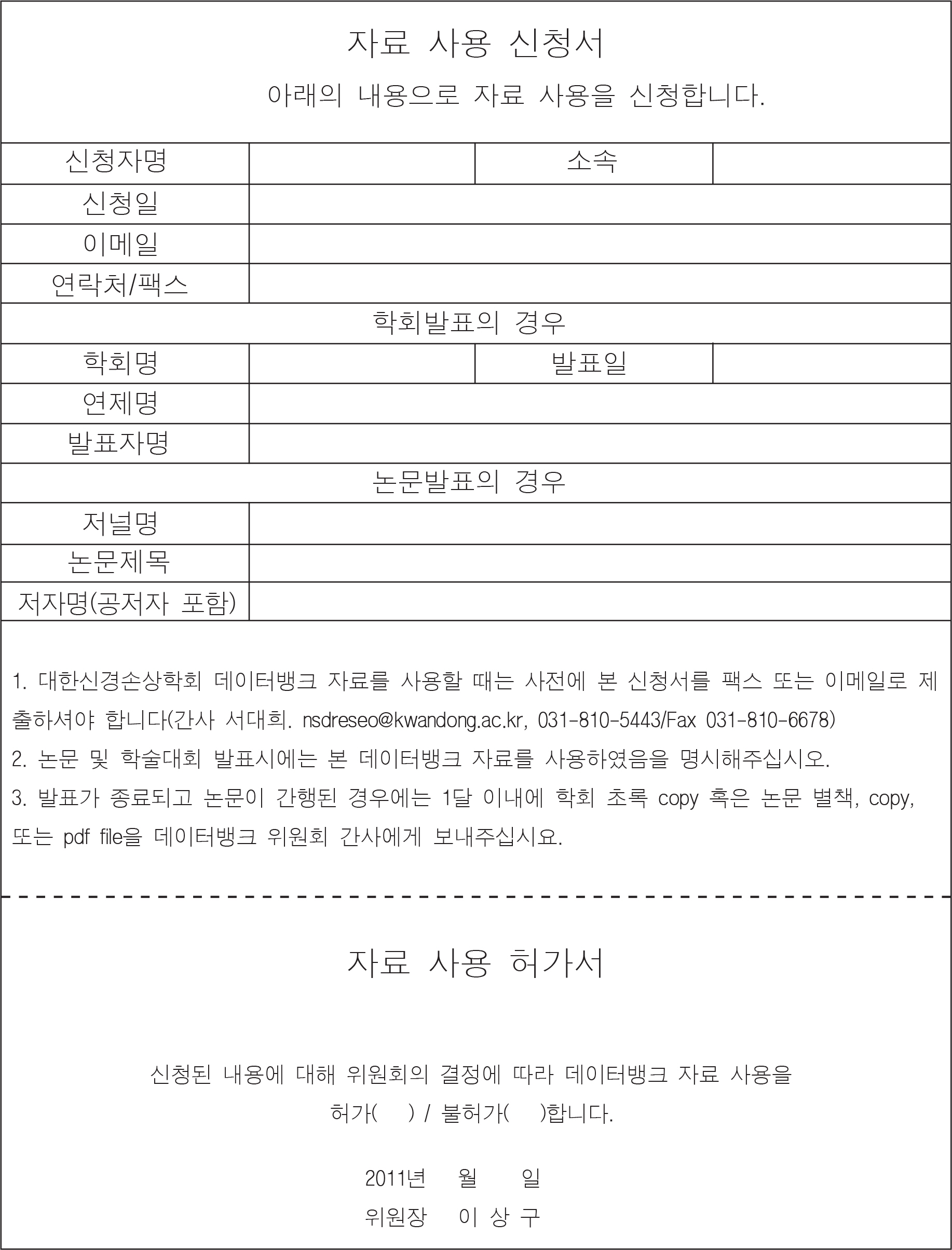Korean J Neurotrauma.
2012 Apr;8(1):1-9. 10.13004/kjnt.2012.8.1.1.
Understandings and Key Elements of Trauma Data Bank System
- Affiliations
-
- 1Department of Neurosurgery, Dankook University College of Medicine, Cheonan, Korea. lsk999999@gmail.com
- KMID: 1427675
- DOI: http://doi.org/10.13004/kjnt.2012.8.1.1
Abstract
- Understanding the components of a Trauma Data Bank System (TDBS) is important, whether one is to use registry data for research or administrative purposes by an institution or a nation. TDBS has been designed to serve a number of purposes, including quality of life improvement, injury prevention, clinical research, and policy development. This review describes the history of trauma registry in the world and key components of TDBS. A detailed review of english-language articles on trauma registry was performed using MEDLINE searches. In addition, relevant articles from non-indexed journals were identified with Google Scholar. Since their beginning over 30 years ago, trauma registries have not fully been established in most developing countries. The following elements play key roles in the creation of trauma data bank: 1) study design, 2) inclusion and exclusion criteria, 3) collected variables, 4) registry software, 5) registry staff and training, and 6) data management strategies. By reviews in the articles, guidelines for the design and implementation of trauma registries are given. The final goal of this review is to make an application to establishment the futures of Korean Trauma Data Bank System.
Figure
Cited by 3 articles
-
Historical Review of Japan Neurotrauma Data Bank (JNTDB)
Dong-Ho Kim
Korean J Neurotrauma. 2013;9(2):31-35. doi: 10.13004/kjnt.2013.9.2.31.Epidemiologic Impact of Rapid Industrialization on Head Injury Based on Traffic Accident Statistics in Korea
Dong Ho Kim, You Nam Chung, Young Seok Park, Kyung Soo Min, Mou Seop Lee, Young Gyu Kim
J Korean Neurosurg Soc. 2016;59(2):149-153. doi: 10.3340/jkns.2016.59.2.149.Introduction to the Korean Neurotrauma Data Bank System and Report on the Results of the Second Project
Ji-Na Kim, Ki Seong Eom
J Korean Neurosurg Soc. 2025;68(1):25-36. doi: 10.3340/jkns.2024.0156.
Reference
-
1). Brain Trauma Foundation; American Association of Neurological Surgeons; C; Congress of Neurological Surgeons. Guidelines for the management of severe traumatic brain injury. JNeurotrauma24 Suppl1: S1-S106. 2007.2). Centers for Disease Control (CDC). National survey of trauma registries—United States, 1987. MMWRMorbMortalWklyRep. 38:857–859. 1989.3). Badjatia N., Carney N., Crocco TJ., Fallat ME., Hennes HM., Jagoda AS, et al. Guidelines for prehospital management of traumatic brain injury. 2nd edition.PrehospEmergCare12Suppl1: S1-S52;2008.4). Baker SP., O'Neill B., Haddon W Jr., Long WB. The injury severity score: a method for describing patients with multiple injuries and evaluating emergency care. JTrauma. 14:187–196. 1974.5). Bergeron E., Lavoie A., Moore L., Bamvita JM., Ratte S., Clas D. Paying the price of excluding patients from a trauma registry. JTrauma. 60:300–304. 2006.
Article6). Bernardo LM., Gardner MJ., Seibel K. Playground injuries in children: a review and Pennsylvania Trauma Center experience. JSoc PediatrNurs. 6:11–620. 2001.
Article7). Boyd DR., Lowe RJ., Sheaff LC., Hoecker C., Rappaport DM. A profile of the trauma registry. JTrauma. 13:316–320. 1973.
Article8). Boyd DR., Rappaport DM., Marbarger JP., Baker RJ., Nyhus LM. Computerized trauma registry: a new method for categorizing physical injuries. AerospMed. 42:607–615. 1971.9). Cameron PA., Gabbe BJ., McNeil JJ. The importance of quality of survival as an outcome measure for an integrated trauma system. Injury. 37:1178–1184. 2006.
Article10). Cameron PA., Gabbe BJ., McNeil JJ., Finch CF., Smith KL., Cooper DJ, et al. The trauma registry as a statewide quality improvement tool. JTrauma. 59:1469–1476. 2005.
Article11). Brain Trauma Foundation; American Association of Neurological Surgeons; Congress of Neurological Surgeons; J; Joint Section on Neurotrauma and Critical Care, AANS/CNS, Carney NA. Guidelines for the management of severe traumatic brain injury. Methods. JNeurotrauma24Suppl1: S3-S6. 2007.12). Croce MA., Zarzaur BL., Magnotti LJ., Fabian TC. Impact of motorcycle helmets and state laws on society's burden: a national study. AnnSurg. 250:390–394. 2009.
Article13). Faul M., Wald MM., Rutland-Brown W., Sullivent EE., Sattin RW. Using a cost-benefit analysis to estimate outcomes of a clinical treatment guideline: testing the Brain Trauma Foundation guidelines for the treatment of severe traumatic brain injury. JTrauma. 63:1271–1278. 2007.
Article14). Gabbe BJ., Cameron PA., Wolfe R. TRISS: does it get better than this? AcadEmergMed. 11:181–186. 2004.
Article15). Gillott AR., Thomas JM., Forrester C. Development of a statewide trauma registry. JTrauma. 29:1667–1672. 1989.
Article16). Gupta M. Improved health or improved decision making? The ethical goals of EBM. JEvalClinPract. 17:957–963. 2011.
Article17). Haider AH., Saleem T., Leow JJ., Villegas CV., Kisat M., Schneider EB, et al. Influence of the National Trauma Data Bank on the Study of Trauma Outcomes: Is It Time to Set Research Best Practices to Further Enhance Its Impact? JAmCollSurg, 2012 [Epub ahead of print].18). Hemmila MR., Jakubus JL., Wahl WL., Arbabi S., Henderson WG., Khuri SF, et al. Detecting the blind spot: complications in the trauma registry and trauma quality improvement. Surgery. 142:439–448. discussion 448-449. 2007.
Article19). Hlaing T., Hollister L., Aaland M. Trauma registry data validation: Essential for quality trauma care. JTrauma. 61:1400–1407. 200.
Article20). Jurkovich GJ., Mock C. Systematic review of trauma system effectiveness based on registry comparisons. JTrauma47: S46-S55. 1999.
Article21). Kobusingye OC., Guwatudde D., Owor G., Lett RR. Citywide trauma experience in Kampala, Uganda: a call for intervention. Inj Prev. 8:133–136. 2002.
Article22). Lefering R., Paffrath T., Linker R., Bouillon B., Neugebauer EA. Deutsche Gesellschaft für Unfallchirurgie/German Society for Trauma Surgery. Head injury and outcome—what influence do concomitant injuries have? JTrauma. 65:1036–1043. discussion 1043-1044. 2008.
Article23). Li J., Jiang JY. Chinese Head Trauma Data Bank: effect of hyperthermia on the outcome of acute head trauma patients. JNeuro-trauma. 29:96–100. 2012.
Article24). Maejima S., Katayama Y. Neurosurgical trauma in Japan. WorldJ Surg. 25:1205–1209. 2001.
Article25). Marshall LF., Becker DP., Bowers SA., Cayard C., Eisenberg H., Gross CR, et al. The National Traumatic Coma Data Bank. Part 1: Design, purpose, goals, and results. JNeurosurg. 59:276–284. 1983.26). Minter RM., Angelos P., Coimbra R., Dale P., de Vera ME., Hardacre J, et al. Ethical management of conflict of interest: proposed standards for academic surgical societies. JAmCollSurg. 213:677–682. 2011.
Article27). Moore L., Clark DE. The value of trauma registries. Injury. 39:686–695. 200.
Article28). Nakamura N., Yamaura A., Shigemori M., Ogawa T., Tokutomi T., Ono J, et al. Final report of the Japan Neurotrauma Data Bank project 1998-2001: 1,002 cases of traumatic brain injury. Neurol MedChir(Tokyo)46: 567-574. 2006.
Article29). Nathens AB., Jurkovich GJ., MacKenzie EJ., Rivara FP. A resource-based assessment of trauma care in the United States. JTrauma. 56:173–178. discussion 178. 2004.
Article30). Nwomeh BC., Lowell W., Kable R., Haley K., Ameh EA. History and development of trauma registry: lessons from developed to developing countries. WorldJEmergSurg1: 32. 2006.31). Ogawa T. Japan Neurotrauma Databank Committee. [Current clinical trends in brain trauma—Japan Neurotrauma Databank]. Brain Nerve. 62:13–24. 2010.32). Payne SR., Waller JA. Trauma registry and trauma center biases in injury research. JTrauma. 29:424–429. 1989.
Article33). Report from the 1988 Trauma Registry Workshop, including recommendations for hospital-based trauma registries. JTrauma. 29:827–834. 1989.34). Ringdal KG., Lossius HM. SCANTEM ad hoc group on Scandinavian MTOS and Trauma Registry. Feasibility of comparing core data from existing trauma registries in scandinavia. Reaching for a Scandinavian major trauma outcome study (MTOS). ScandJ Surg. 96:325–331. 2007.
Article35). Roozenbeek B., Chiu YL., Lingsma HF., Gerber LM., Steyerberg EW., Ghajar J, et al. Predicting 14-Day Mortality after Severe Traumatic Brain Injury: Application of the IMPACT Models in the Brain Trauma Foundation TBI-trac(®) New York State Database. JNeu-rotrauma, 2012 [Epub ahead of print].36). Shah N. Ethical issues in biomedical research and publication. J ConservDent. 14:205–207. 2011.
Article37). Smith E. The limits of sharing: an ethical analysis of the arguments for and against the sharing of databases and material banks. Ac-countRes. 18:357–381. 2011.
Article38). Stacey DH., Doyle JF., Gutowski KA. Safety device use affects the incidence patterns of facial trauma in motor vehicle collisions: an analysis of the National Trauma Database from 2000 to 2004. Plast ReconstrSurg. 121:2057–2064. 2008.
Article39). Sutrop M. Changing ethical frameworks: from individual rights to the common good? CambQHealthcEthics. 20:533–545. 2011.
Article40). The Lancet. Ethical behaviour in clinical research—a lesson from the past. Lancet378: 962. 2011.41). Zafar H., Rehmani R., Raja AJ., Ali A., Ahmed M. Registry based trauma outcome: perspective of a developing country. Emerg MedJ. 19:391–394. 2002.
Article42). Zehtabchi S., Nishijima DK., McKay MP., Mann NC. Trauma registries: history, logistics, limitations, and contributions to emergency medicine research. AcadEmergMed. 18:637–643. 2011.
Article
- Full Text Links
- Actions
-
Cited
- CITED
-
- Close
- Share
- Similar articles
-
- Historical Review of Japan Neurotrauma Data Bank (JNTDB)
- Effect of Blood Ordering and Input with using the Blood Information Sharing System (BISS) of the Korean RedCross
- Injury Severity Scoring System for Trauma Patients and Trauma Outcomes Research in Korea
- Comparison of Outcomes at Trauma Centers versus Non-Trauma Centers for Severe Traumatic Brain Injury
- Key Elements for the Improvement of Healthcare Services for Foreigners in Korea: A Delphi Study



